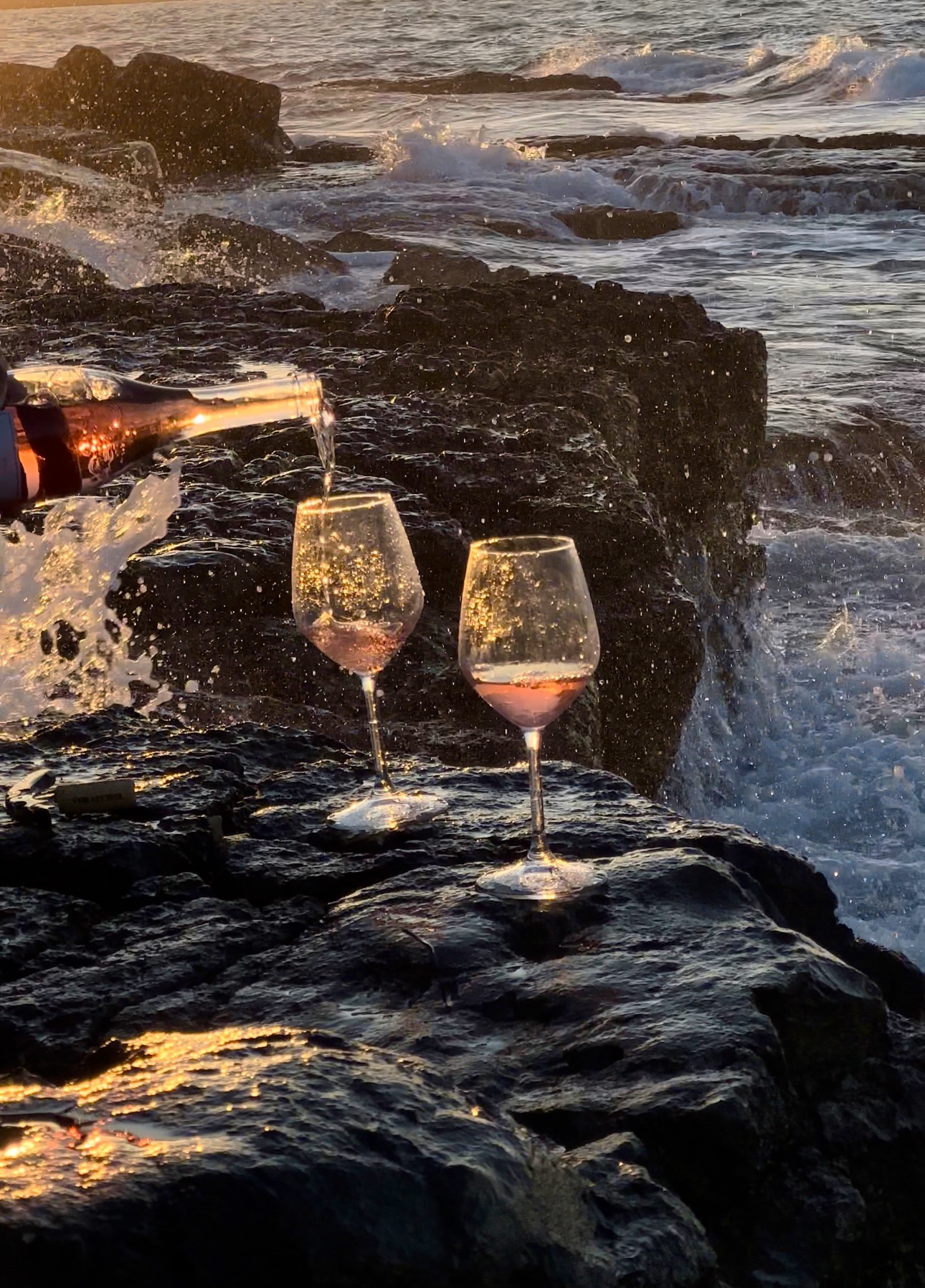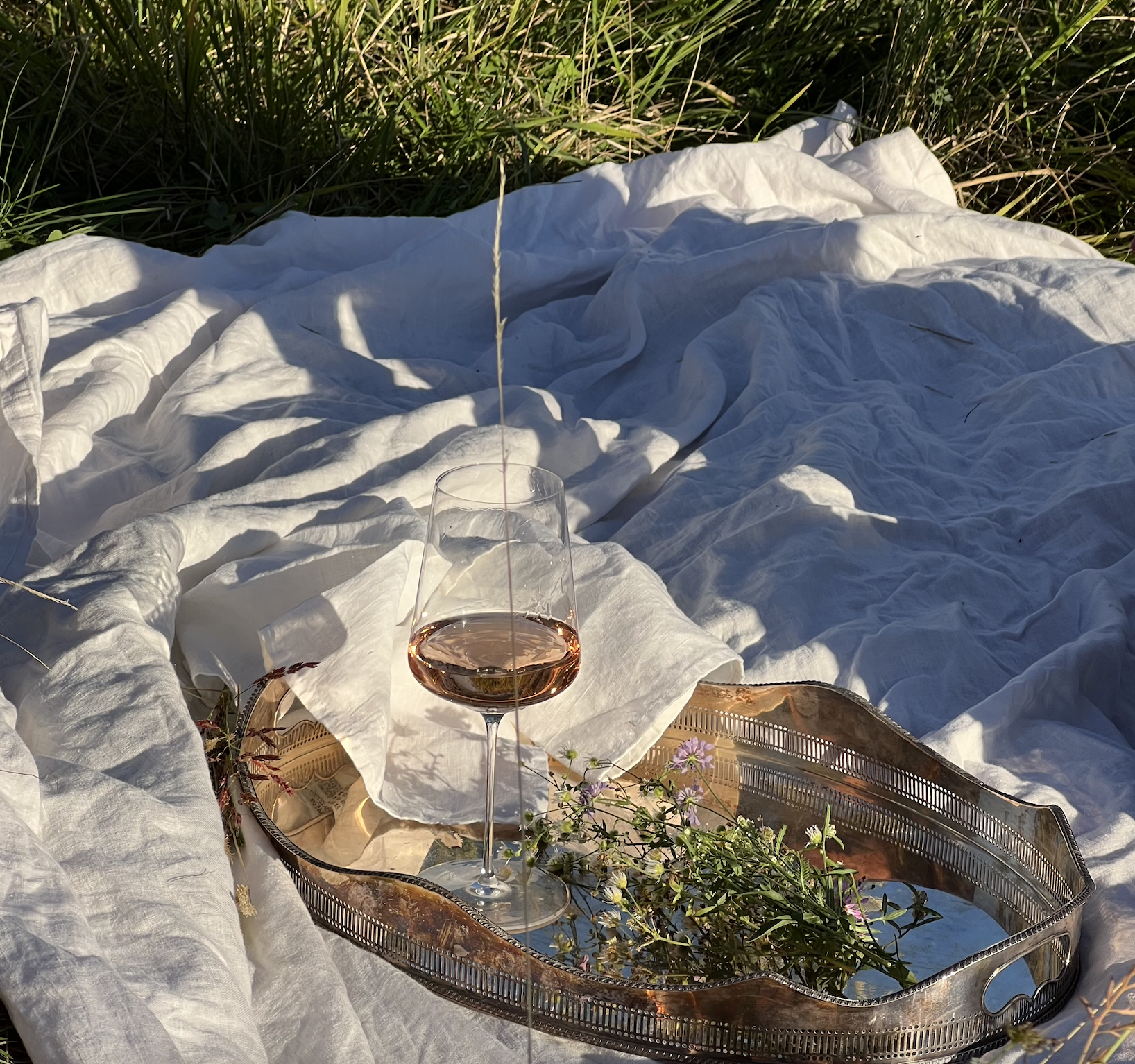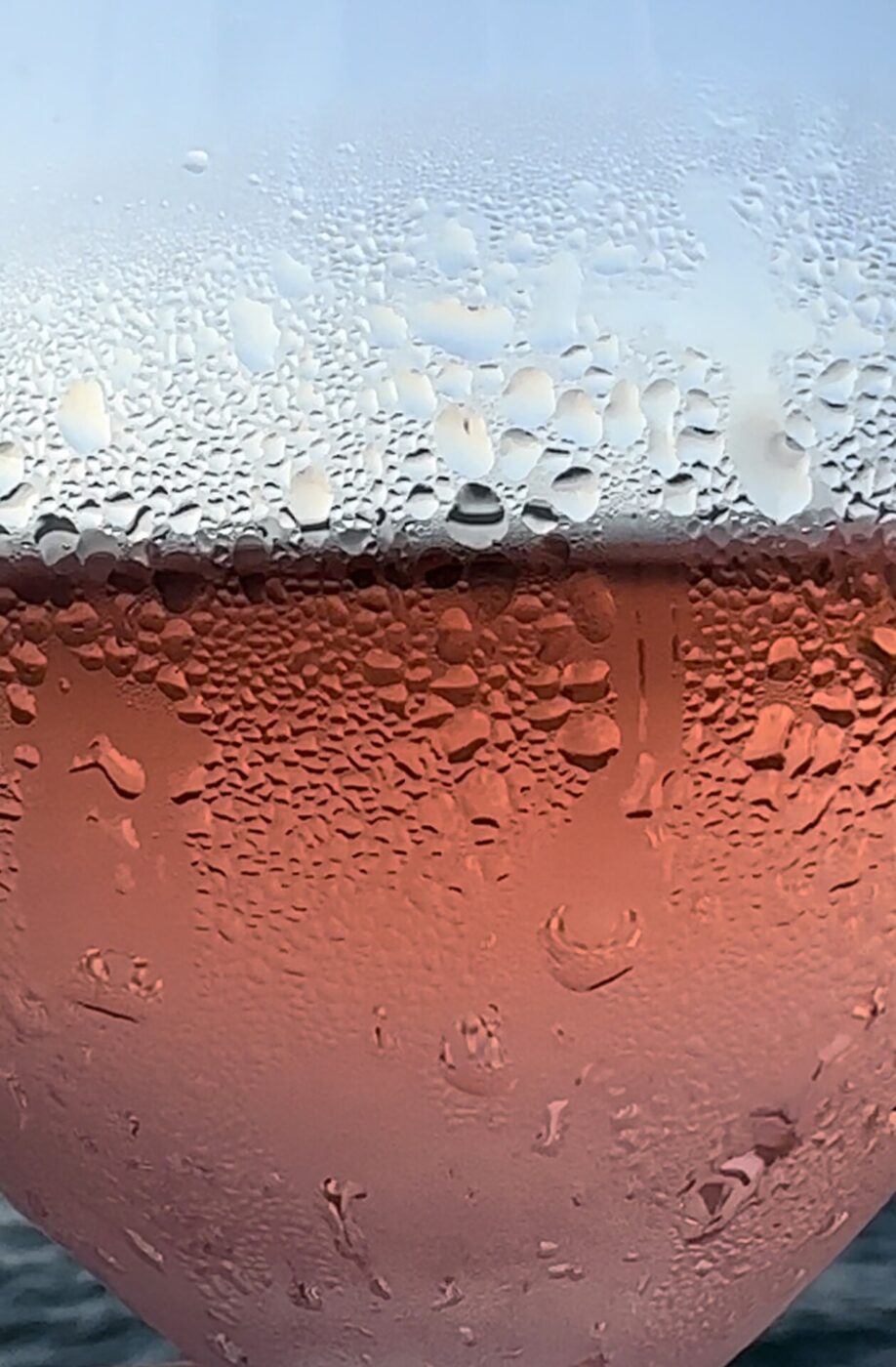Let’s start with a cliché. The sun is finally out in grey London, and everyone is already complaining that it’s too hot. What to order? Rosé obviously. Only Provençale will do: the palest possible, with three ice cubes for good measure. Not only does it make the wine stay cooler, but it dilutes it down enough so that you can drink it by the gallon. Suddenly, “rosé all day” is the only option; who can forget when the conquest started, some time around 2012, when it seemed like a Pink Army on the move? No longer was the wine just reserved for cheap, terrible bottles grabbed from the supermarket, but the cool, ultra-Instagrammable option. Take a bottle or two of salmon-pink wine, plonk them in an ice bucket, snap a photo, sip them all afternoon while lounging poolside, and watch the likes rack up on your feed… These are session wines, not serious wines, and they slide down the throat rather too easily.
Not so in Italy. Order a rosé and you’re in line for something rather different. I guess the clue is in the name: not rosé but rosato. These added syllables already hint at a greater emphasis, a stronger sense of a wine than an easy-going rosé. The rosati of Italy are treated more as racy, red ladies than they are blushing brides. Luca Dusi, owner of Passione Vino and importer of Italian wine to England, confirmed what I had already suspected. “There is a distinct seasonality to Italian rosati,” he replied immediately. “People who come looking for a rosé expect notes of strawberry and raspberry, and rosé has come to be thought of not as a wine, but simply a drink here in London. Whereas in Italy, they are considered light reds, and each region has their own dishes that they pair the wines with.”
Probably the best example of this light redness–starting with the heavyweights–is one of the few appellations to be solely dedicated to rosato: Cerasuolo d’Abruzzo. Its denomination in 2010 marked a different genre of rosato, one that bridged the gap between delicate Provençale-style rosés and heavy reds and is instead closer to a light red such as a Gamay or Pinot Noir.
But let’s pause here–before getting into all the technicalities of denominations, vinification, and DOC/G certifications–and return to what Dusi said. When you think of what to eat with a rosé, what comes to mind? Smoked salmon? A delicate salad? Nothing apart from a few crisps? No surprises there. Rosé outside of Italy is that sort of wine.
But Italian rosati are meant to be savoured, enjoyed, and paired with food. This was particularly apparent to me a few weeks ago while dining at Venice’s Alle Testiere. As usual, we let Luca choose the wines by the glass: after a Friulian macerated wine with razor clams for antipasti, he went to his wine fridge in preparation for the secondi–fish obviously–and out he came, surprise surprise, with a rosato. Of course, it wasn’t a pale, almost translucent rosé, but a wine with body: a Sicilian rosato from the slopes of Etna, produced by I Vigneri, a vineyard with fundamental ecological and social initiatives too. I asked more: grape? Vinification? The responses are vague: “A blend of indigenous white and red ancient varieties.” Over another two glasses, this ambiguity made perfect sense; it had the freshness of a white yet enough body to accompany the complex secondi for which Alle Testiere is so renowned.

From the slopes of Etna, it is only a metaphorical hop, skip, and a jump to the mainland. Looking at the small geographical distance between Sicily and the regions of Puglia, Calabria, and Campania, comparisons between their rosati come thick and fast, and yes, the pun was intentional. Take, for instance, the Castel del Monte Bombino Nero from Puglia, the other Italian rosato to have its own DOCG status. Much like the wines in Sicily, the A’Vita from Calabria has a fascinating minerality, combined with an orange tint lent by the indigenous Gaglioppo grapes. Then there’s the Lunedi Rosato by Campania’s Vigneti Tardis that is made with 100% Primitivo, aged with the skins of Fiano grapes in a maceration method to create an intriguingly strong wine that has a touch of sherry to it.
Now I really don’t want to bore you here with all of the specifics of how wines get a DOC or DOCG certification, because there are honestly far more important things in life. But if you have a second or two, then bear with me. There are over 330 designations in Italy that have this acclaim. Most important though is the fact that those few letters are a marker of quality and signify an adherence to the vinification methods of the region. In turn, this often means that the grapes used in each respective region are indigenous; recognition by way of a DOC/G goes to protect these grapes from extinction.
It might seem a little odd, therefore, to pipette this increasing relevance of Italian rosati by honing in on Puglia. In that slender heel of Italy, there are over 20 different grapes that eventually make their way into Puglian rosati. This results in a wide variety of wines from a relatively small geographic area. The wines from Salento use mainly Negroamaro or Primitivo, sometimes with the addition of Susumaniello, and, more often than not, these are the same grapes used for the inky red wines of the region. The result, of course, depends on the vinification. Natural producers who combine grapes such as Nero di Troia and Aleatico and who prefer a more rustic production method create dark-hued wines with strong red fruit notes, while another producer could do a delicate maceration of red grapes such as Lambrusco and Negroamaro to create a blush pink wine with high acidity. In essence, Puglia’s variety of rosati is a case in point as to how varied and complex the rosati of Italy are more broadly.
That’s not to say that all Italian rosati are heavy hitters. I think that the strength of Italian rosati walks hand in hand with the evolution as you travel down the length of the boot–a bit like the climate, a bit like the accents. They get stronger the further south you go, and lighter the further north. The shift happens somewhere in the heart of Italy (dare I whisper it, in Tuscany). I can vouch for this, after having tried my fair share of rosati while in Florence and Maremma. It started with the Alié by Frescobaldi and it spiralled from there. New favourites are the Rosato delle Conchiglie by Poggiotondo and the delicate rosato typical of Sean O’Callagahan’s methods at Tenuta Carleone; it’s a wine that would give a rosé by Domaine Tempier a run for its money. In essence, these wines of Tuscany seem to be closest to the delicate rosés of Provence, and I might raise my glass and say that this is because of the region’s proximity to the Mediterranean, which, in a way, calls for easy drinking wines to be had in a cabana along the coast. Oddly enough though, these wines are made from grapes that are so often associated with the punchy Chianti for which the region is so renowned. Yes, sangiovese is equally the grape used for the delicate rosati Toscani. Call the red grape a bit of a leopard who changes his spots, but the result are wines that are worlds apart.

What this all serves to say is that not all Italian rosati are created equal. In fact, the etymology even within Italy is so diverse that it’s worth just quoting Shakespeare and saying that “a rosé by any other name would still smell as sweet.” Take the delicate rosato from Monte del Frá, known as a chiaretto on account of its clear colouring and which becomes paler and paler with each passing vintage. Take the Cerasuolo of Abruzzo that, at times, looks like a Burgundian Pinot Noir–fittingly, “Cerasuolo” translates to “pale cherry red”–or the salmon-pink Rose de Manincor that is a favourite of Trattoria Cammillo’s proprietor Chiara. Fascinating is the fact that this specific wine is made from a varied melange of grapes derived from the estate’s best plots, also used for red wine: some Merlot, Pinot Noir, Cabernet, and Syrah are all thrown into the mix, with a small dose of the local Lagrein for good measure.
More importantly though–and perhaps this is what makes the rosato of Manincor so good–is that it is produced through a method known as saignée, or bleeding–salasso in Italian. A bloody rosato. (Ironic, considering the human proclivity to spill rosé and make it look like there’s been a medical emergency.) A rosato made in this method is a fascinating one: bleeding off a portion of red wine after short skin contact (oh yes, sometimes longer isn’t better) to augment the ratio of skin to juice in the vats to make a stronger rosato, vintage depending. The name is in reference to the practice of bloodletting, once believed to be an effective medical practice, as the colour of these rosati is akin to that of blood. This “bleeding” extraction stops the wine from macerating with the must, creating a more structured, aromatic rosato.
So, I guess if you’ve made it this far without heading to the fridge, grabbing the first bottle of rosé that comes to hand, and dropping a few ice cubes in it, then you’ve got it. Understanding Italian rosati is a bit like attempting to control a cohort of school kids. Try to classify them under a single umbrella, and you will fail. This has been most clear to me when, as research for this story, I spoke to Italian importers and wine bar owners like Luca from Passione Vino, Gianni from Florence’s Casa del Vino, and at Franco’s, where they have the longest rosé section of any London wine list. They didn’t talk about the wines I thought they would, like a niche Aleatico from Lazio. Instead, what they often brought out was a sparkling rosato in some form; either a col fondo or a very pale Lambrusco or a méthode ancestrale. One brought me a Radice by Paltrinieri, essentially a Lambrusco; another the Tuscan Oh Rosa! by Sequerciani, made from Ciliegiolo grapes; and a third the Franciacorta Rosé Extra Brut. Everyone had a different idea of what an idiosyncratic Italian rosato was. And, in the end, I guess that is the point. I have gradually realised that the only way to understand Italian rosati is to try as many different varieties from as many different regions as possible… What a chore. I can almost guarantee that each and every one of you will have a different take on what your favourite style is: Italian rosati really do make up an assorted bouquet of roses, and, as they say in Italy, “Il mondo è bello perché è vario” (“The world is beautiful because it’s varied.”)



